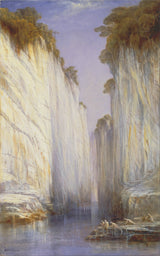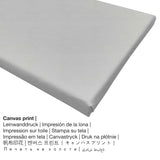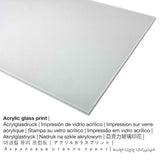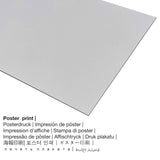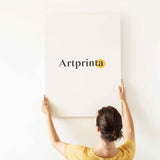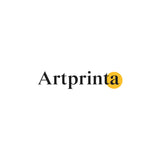Edward Lear, 1882 - Nkume Marble - Nerbudda Jubbolpore - mbipụta nka mara mma.
Ụtụ gụnyere. Mbupu gbakọrọ na ndenye ọpụpụ.
Nkọwapụta nka nka
| Aha nka nka: | "The Marble Rocks - Nerbudda Jubbolpore" |
| Nhazi: | sere |
| Otu sara mbara: | nkà nke oge a |
| Time: | 19th narị afọ |
| Emepụtara n'afọ: | 1882 |
| Afọ nka: | 130 afọ |
| Ọkara nke ihe osise izizi: | mmanụ na kwaaji |
| Akụkụ izizi nka: | Elu: 381 mm (15 ″); Ogologo: 241 mm (9,48 ″) |
| Egosiputara na: | Yale Center maka British Art |
| Ebe ebe ngosi nka: | New Haven, Connecticut, Njikota Obodo Amerika |
| Webụsaịtị ihe ngosi nka: | Yale Center maka British Art |
| Ụdị ikike nka: | ngalaba ọha |
| Site n'aka: | Yale Center maka nka nka British na Wikimedia Commons |
Banyere onye na-ese ihe
| Ihe nkiri: | Edward Lear |
| Aliases: | Edward Lear, Lir Eduʼard, Liri Eduard, Lear, Lear Edward, Derry Down Derry, lear e, Lēar Entouarnt, ליר אדוארד |
| okike nke onye nka: | nwoke |
| Nationality: | British |
| Ọrụ: | comedian, landscape painter, novelist, poet, writer, scientific illustrator, ornithologist, painter, illustrator |
| Country: | United Kingdom |
| Nhazi nke onye nka: | omenkà nke oge a |
| Ụdị nka: | Ihe ngosi |
| Oge ndu: | 76 afọ |
| Afọ ọmụmụ: | 1812 |
| Ebe amụrụ onye: | Greater London, England, United Kingdom, obodo mepere emepe |
| Nwuru: | 1888 |
| Nwuru na (ebe): | San Remo, Imperia Province, Liguria, Italy |
Nkọwapụta ngwaahịa
| Nkewa ngwaahịa: | ọmarịcha nka |
| Usoro mmeghari: | mmeputakwa n'ụdị dijitalụ |
| Usoro mmepụta: | mbipụta dijitalụ (Mbipụta UV ozugbo) |
| Mmalite ngwaahịa: | Germany |
| Stockdị ngwaahịa: | mmepụta ihe na-achọ |
| Ihe eji eme atụmatụ: | ụlọ mmepụta ihe nka, ihe ndozi ụlọ |
| Nhazi nke ihe nka: | nhazi ihe osise |
| Oke akụkụ: | ogologo: obosara - 2: 3 |
| Mmetụta ihe onyonyo: | ogologo bụ 33% mkpụmkpụ karịa obosara |
| Akụrụngwa ị nwere ike ịhọrọ: | Mbipụta kwaaji, mbipụta enyo acrylic (nwere ezigbo mkpuchi iko), mbipụta akwụkwọ mmado (akwụkwọ kwaaji), mbipụta ọla (aluminium dibbond) |
| Ọdịiche dị n'okirikiri akwa akwa akwa (akwa akwa): | 20x30cm - 8x12", 40x60cm - 16x24", 60x90cm - 24x35", 80x120cm - 31x47", 100x150cm - 39x59" |
| Acrylic glass print (nwere ezigbo mkpuchi iko) nhọrọ: | 20x30cm - 8x12", 40x60cm - 16x24", 60x90cm - 24x35", 80x120cm - 31x47", 100x150cm - 39x59" |
| Mbipụta akwụkwọ mmado (akwụkwọ kwaaji): | 40x60cm - 16x24", 60x90cm - 24x35", 80x120cm - 31x47" |
| Nha aluminom dibond (ihe aluminom) nha: | 20x30cm - 8x12", 40x60cm - 16x24", 60x90cm - 24x35", 80x120cm - 31x47" |
| Nhazi mbipụta nka: | na-enweghị etiti |
Nhọrọ ihe ngwaahịa dị
Ndepụta ndetu ngwaahịa na-enye gị ohere ịhọrọ nha na akụrụngwa masịrị gị. Ị nwere ike ịhọrọ n'ime nhọrọ nhazi ngwaahịa ndị a:
- Mbipụta enyo acrylic: The print on acrylic glass, often described as a fine art print on plexiglass, will change the original artwork into brilliant home décor and makes a good alternative option to aluminium and canvas art prints. Your favorite artwork is being printed thanks to state-of-the-art UV direct print technology. This has the impression of rich and sharp colors.
- Mbipụta ọla (aluminium dibbond): An Aluminium Dibond print is a material with an outstanding depth - for a modern impression and a non-reflective surface. For the Print On Aluminum Dibond, we print your artpiece onto the aluminium surface.
- Mbipụta akwụkwọ mmado (ihe kwaaji): The poster print is a printed canvas with a slightly rough structure on the surface. Please keep in mind, that depending on the absolute size of the poster we add a white margin of approximately 2-6cm round about the print motif in order to facilitate the framing.
- Kwaaji: A printed canvas, which should not be confused with a painting on a canvas, is an image applied directly on canvas fabric. Further, a printed canvas generates a lively and pleasant feeling. A printed canvas of this work of art will provide you with the unique opportunity of turning your personal into a large work of art like you know from art galleries. The great advantage of canvas prints is that they are relatively low in weight. This means, it is quite simple to hang up your Canvas print without extra wall-mounts. A canvas print is suited for any kind of wall.
Banyere edemede a
The Marble Rocks - Nerbudda Jubbolpore bụ ọrụ nka nke nwoke kere British artist Edward Lear in 1882. Ejiri nha ya rụọ ọrụ nka: Elu: 381 mm (15 ″); Ogologo: 241 mm (9,48 ″) ma were ihe osise ese Usoro of oil on canvas. Today, this work of art can be viewed in in the Yale Center for British Art's digital collection, which is a public art museum and research institute that houses the largest collection of British art outside the United Kingdom. With courtesy of: Yale Center maka nka nka British na Wikimedia Commons (ọha na eze).E wezụga nke ahụ, ọrụ nka nwere akara kredit ndị a: . Ọzọkwa, alignment bụ Eserese ya na oke nke 2: 3, meaning that the length is 33% shorter than the width. Edward Lear was a male writer, poet, comedian, illustrator, painter, ornithologist, novelist, scientific illustrator, landscape painter of British nationality, whose style can mainly be classified as Realism. The European artist lived for a total of 76 afọ, amuru na afo 1812 in Greater London, England, United Kingdom, metropolitan area and deceased in the year 1888.
Nkwupụta iwu: We try everything in order to depict the products as precisely as possible and to exhibit them visually. However, the pigments of the print products and the imprint might differ somehwat from the presentation on the device's monitor. Depending on the screen settings and the nature of the surface, not all color pigments will be printed as realisitcally as the digital version depicted here. Given that all art reproductions are processed and printed by hand, there may as well be slight differences in the exact position and the size of the motif.
© nwebiisinka | Artprinta.com

